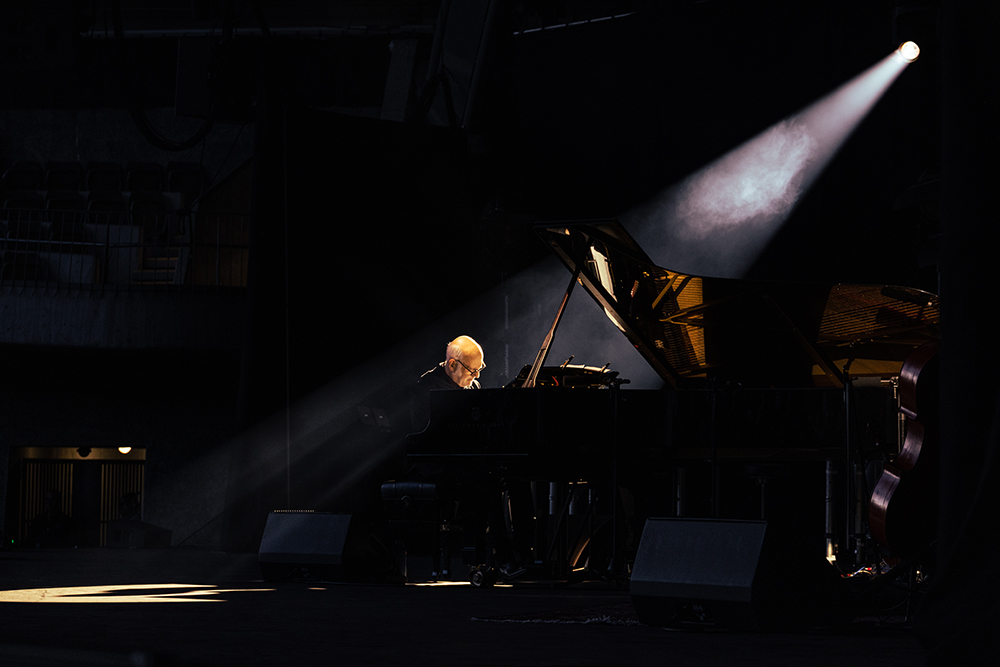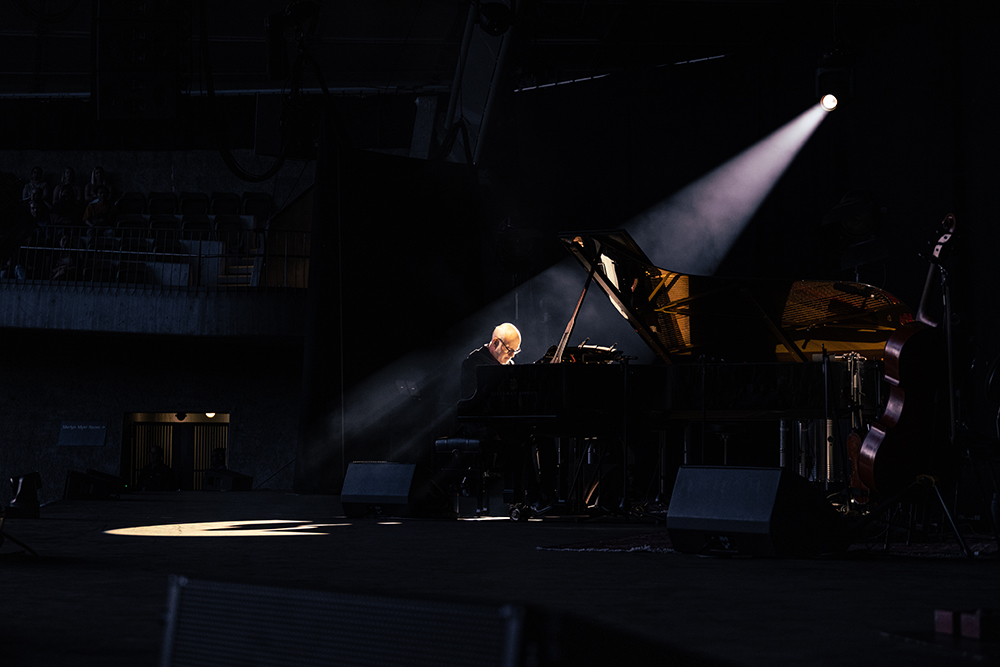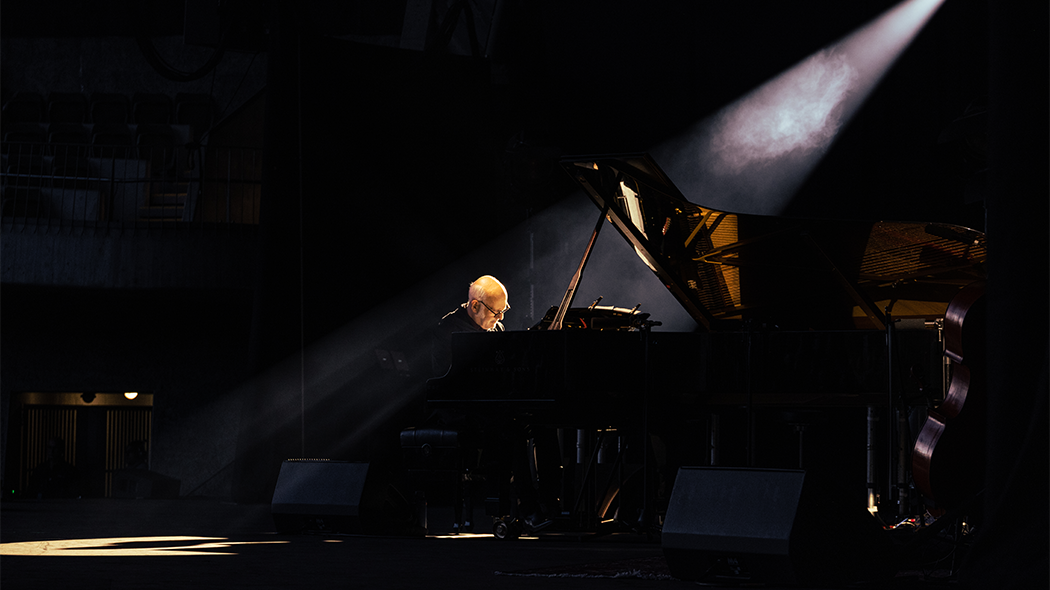
Review: Ludovico Einaudi at Perth Concert Hall
Ludovico Einaudi at Perth Concert Hall
Friday, February 9, 2024
Perth Festival is now up and running. Last Friday, the fine music program got underway with Ludovico Einaudi and his ensemble performing a stirring show at Perth Concert Hall.
The power of the performance lay as much in the sensual music as as in the rapport Einaudi builds with his audience. They all loved it. He has been developing his unique style of music over the past forty years, garnering a deep, faithful and enthusiastic following through his concerts, recordings and film scores.
This concert began with the sound of dripping water through the darkened auditorium. Then the spots came up and Einaudi took to the stage. After warmly embracing the room, he sat at the grand and performed a set of his signature solo piano pieces. Pinpointed in three intense shafts of light that beamed across the mildly smoky room, he quickly transported the audience into his preferred reflective space and held them there.
Einaudi’s musical style has been described as ambient, meditative and introspective—in a term, 'New Age'. He draws on minimalism and contemporary pop, often utilising standard country and western chord progressions to underpin his musical structures. It has been said that he is less adventurous than many of the more progressive pop bands and that, in this sense, his music is vanilla. But if so, it is Connoisseur Bourbon bean vanilla—rich and textured, not your plain ice-cream cup.
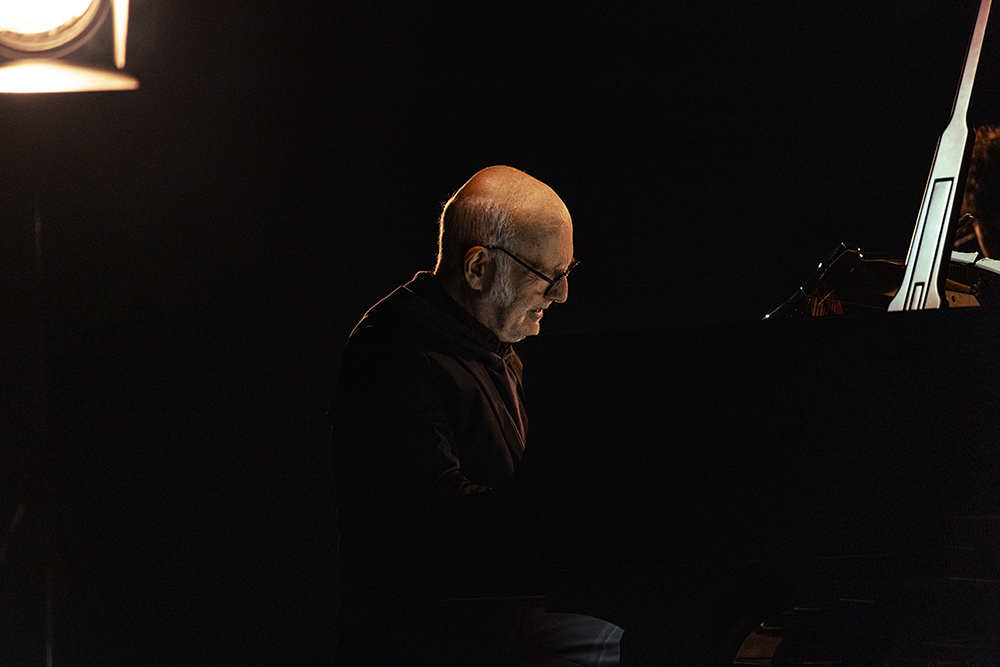
Ludovico Einaudi
Although he studied composition at the Conservatorio Verdi in Milan, Einaudi regards himself as an anti-conservatory musician. He abandoned the strict academic approach under the influence of Italian composer Luciano Berio, with whom he studied after graduating. Famous for his experimental and electronic works, Berio passed on his belief in the dignity of music, the paramount importance of beauty and gravitas. Einaudi’s scholarship to the Tanglewood Music Festival in Massachusetts in the USA, which followed, furthered this transition.
His minimalism is not in the American school of Steve Reich and Philip Glass with their dark undertones and dissonant layerings, nor even in the British vein of Michael Nyman and John Tavener with their flashes of humour and occasional leaps into the absurd, but more along the European lines of Arvo Pärt and Wim Mertens—only gentler, more focused on the beautiful and melodic and less musically adventurous. It is deeply moving music, but soft-edged.
Neither is he a virtuoso pianist, which could be argued, by necessity, leads into minimalism. Rarely did his right hand venture into the upper third of the keyboard. It was memorable when it did, usually at the climax or end of a piece, but more often he stuck to the octaves around middle C. Building sweet, tightly repetitive, subtly modulating figures with his right hand, he would counterpoint with his left, usually utilising a simple, four-note bass pattern. Although this is an effective meditative style, after a while it becomes a bit same-ish. By the end of the third solo piece, it was predictable, especially for those not so familiar with or in love with the individual pieces.
But then, some minutes into the fourth work, a new sound began to quiver gently over the piano. The lights came up on the erstwhile dark right-hand side of the stage to reveal a violin player and cellist softly weaving their way over and through the intense piano configurations. Gradually, the balance shifted, the piano softened, the strings soared and the layering lifted the music to the next level.
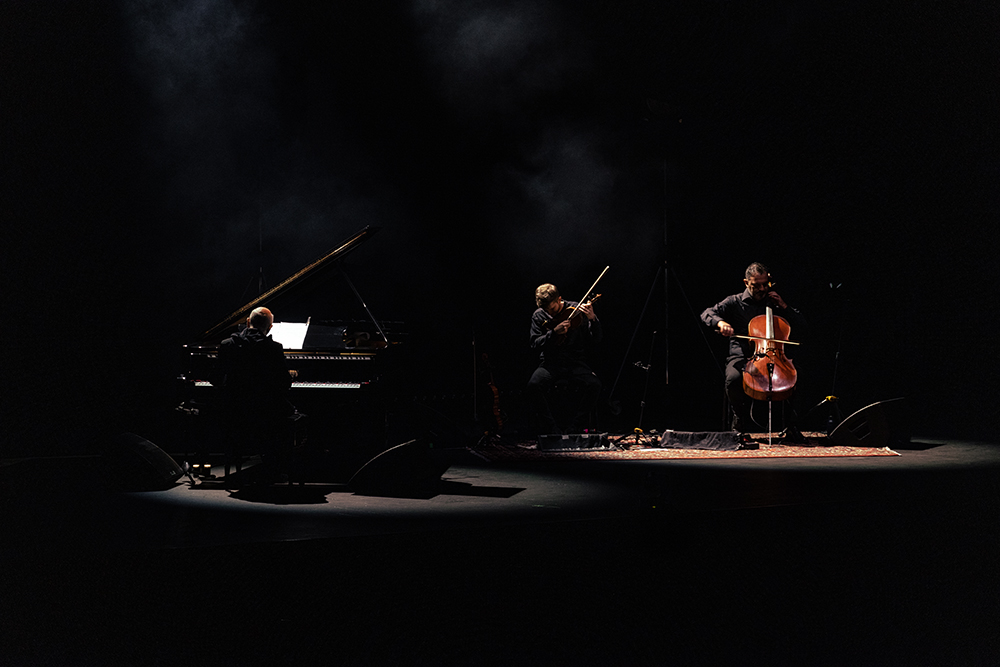
Ludovico Einaudi
A few minutes later, there was movement through the shadows on the other side of the stage, and an electronic hum joined the strings. When the lights came up on this quarter, a percussionist and his spread of instruments were revealed. The sound was now full and began to build in intensity. Having lulled you into a reflective zone, it was time for Einaudi to stir things up. Darker tones came into play, and the music began to throb.
Within the ensemble, electronics and effects play a key part. The strings were amplified and run through reverb, echo and chorus, so the single players sounded more like a small ensemble or chamber orchestra. The range of percussion was more complex. The two bass drums were enhanced by marimba, a keyboard, an electronic drum pad, and what might have been a glockenspiel. He also seemed to be the mixer, modulating the electronic textures of the strings.
As with the piano, the individual parts were not especially complex—a few beats of a mallet on a bass drum, some spiccato violin, furious bowing on the cello—but the accumulation was powerful, and the electronic effects enabled it to build even further, becoming more sensational.
The whole experience was enhanced by the light show. There was an array of overhead spots that highlighted the various musicians, often from behind, an effect embellished by a dotted row of small, yellow spots on the floor at the back of the stage that shone straight into the audience. This warm, sensual and slightly mysterious atmosphere, with the musicians silhouetted, was apt for the music.
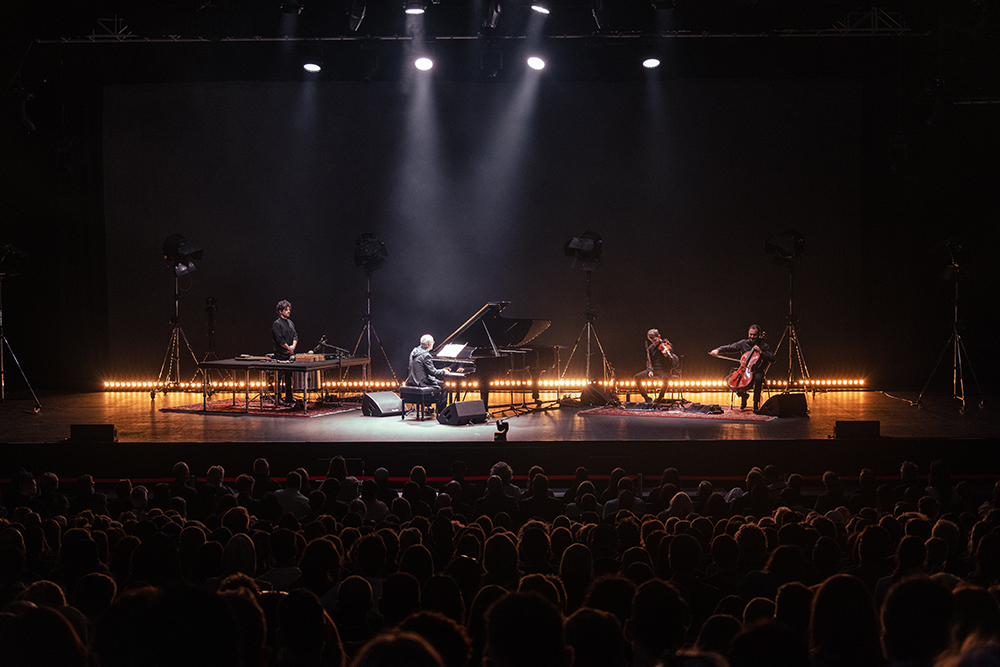
Ludovico Einaudi
To coincide with his Australian tour, ABC Classic FM produced a special 90-minute feature on Einaudi’s music. Presented by Greta Bradman and aired Monday night, it explored the programmatic nature of Einaudi’s compositions. It seems some of his works are closely tied to a specific story or image. Hearing Bradman’s lilting voice accompany the music with these descriptions captured the full New Age context in which the music belongs. The stories included an account of a butterfly’s metamorphosis from caterpillar to full fight—its wings breaking through the cocoon to spread and flutter—and a Yoga Nidra-like meditative journey through the body to release the tension of a chaotic day. These dimensions enriched the music.
Einaudi’s audience is not your typical Perth Concert Hall classical crowd. They are a diverse lot of all ages, but on average younger and more street smart than the symphony set. New Age sophisticates are people who like the more elegant, baroque end of the contemporary canon but still probably follow the finer pop artists as well. They didn’t look to be a crowd that explores the darker corners of modern music, where harmony and beauty are not preconditions. Some may, but many won’t. But that’s not to say the music isn’t deeply moving. It is. As the impressionist painter Pierre-Auguste Renoir famously posed, “Why shouldn’t art be pretty? There are already too many unpleasant things in this world.”
One young woman in black was so transported that she cried her way through the entire show. Hands above her head, she applauded every piece and was the first to spring to her feet when the ensemble took a bow after their initial run together. A handful of people joined her. After another extended solo piano piece and two final stirring numbers with the ensemble, she again led the charge. This time the whole room stood with her and clapped for what seemed like a good ten minutes.
There was no published program or set running order for the concert. As the usher said while shepherding us out, ‘Einaudi and his band like to go with the flow of energy in the room.’ She added that they would have loved the feeling in the Perth Concert Hall. So did the audience. It was a sensational start to the Perth Festival.
IAN LILBURNE
Photos by Joshua San

